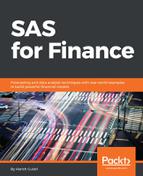Financial institutions lend to various organizations. At times, financial institutions also end up borrowing. The lending creates a risk of default. In the event of a default, the borrower might not fully pay back the principal and the interest on the borrowed sum. This scenario is termed credit risk. There are various actions that can be taken to mitigate this risk. These actions collectively form the credit risk management discipline. The probability of the borrower defaulting needs to be taken into account when forming a credit risk management policy for a bank. Credit risk management is necessary in order to meet regulatory requirements and also to manage the lender's capital adequacy and monitor the quality of the loan book. Lenders also have an obligation to ensure that there are no systematic failures in their credit risk management policies, as any such failure could put the lender at risk of bankruptcy and create ripples across the financial world, thereby impacting the small businesses that are the mainstay of any economy.
We will cover the following topics in this chapter:
- Risk types
- Basel norms
- Key credit risk metrics
- Important aspects of credit risk management
- Building a PD model using the Genmod procedure that fits a generalized linear model
